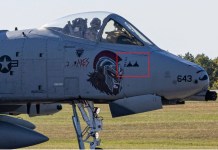Russian giant Sukhoi is using augmented reality to assist in the production of the country’s first fifth-generation fighter Su-57 after US’ Lockheed Martin experimented with similar technology for its F-35 Lightning II.
Why China’s Highly Ambitious Brahmaputra Dam Endangers India-Bangladesh Relations?
A video that has been widely shared on Twitter shows the use of augmented reality on the assembly line of Su-57 fighter. While the user who posted the video didn’t mention what device was used but analysts believe that it is similar to Microsoft HoloLens.
Использование дополненной реальности на сборочной линии истребителя 5-го поколения Су-57.
"Визуализация монтажей"
1/3 pic.twitter.com/xx0CuxCwW0
— SwankyStas (@StasSwanky) December 9, 2020
HoloLens is a pair of mixed reality smart glasses produced by IT giant Microsoft. The video shows a mix of augmentation of reality with a desktop environment superimposing on it. It shows the place for each screw that will fit in the body of the Su-57 fighter, including internal cables and rivets.
Reportedly, the reason behind the video footage showing inaccurate superimposition is the violation of the calibration of the RGB camera relative to the projection display of the glasses, which was detected only during video editing.
The same report added that the footage was made during “the debugging of the assembly line” of Su-57 at the aircraft plant. Furthermore, changes were made to “improve efficiency, including the transfer of the alignment and delivery area from another workshop to the assembly workshop” at the end of July.
Currently, the Su-57 is being assembled at Komsomolsk-on-Amur Aircraft Plant (KnAAZ) where the video was reportedly shot.
The heavyweight Su-57 took its first flight in 2010. It is designed to have supercruise, supermaneuverability, stealth, and advanced avionics to overcome the prior generation fighter aircraft as well as ground and naval defenses. The fifth-generation fighter jets will be first received by the Western Military District of Russia.
The aircraft features stealth technology with the broad use of composite materials is capable of developing supersonic cruising speed, and is furnished with the most advanced radio-electronic equipment, including a powerful onboard computer (the so-called electronic second pilot), the radar system spread across its body and some other innovations, in particular, armament placed inside its fuselage.
It is designed to destroy all types of air, ground, and naval targets.
A similar non-augmented reality technology was used during the production of F-35 Lightning II. What is called “projection technology”, it uses projectors to technicians telling them the exact position of a screw or other equipment. The technology also tells them the correct order of installation and even points out if there’s a problem due to material thickness by changing the color of the light from orange to red indicating a problem in the measurement.
In the video, the principal engineer explains that the technology is used in aerospace production as aerospace assembly operations involve a large number of operations over a large area.
According to The Drive, ultimately, both Russian and US methods help ensure that the stealthy jets being built are finished to the highest possible standards adding that such a technology encourages paperless operations and reduces the need for traditional instruction manuals and blueprints. The technology also speeds up the production process which would otherwise require longer labor hours.




